Minnesota, also known as the “Land of 10,000 Lakes,” is a state with a rich cultural heritage and a diverse range of cities, each with its unique character and contributions to the state’s economy. In this article, we will explore different large cities in Minnesota, examining them and ranking them from three distinct perspectives: population, total land area, and economic impact. Through this exploration, readers can gain insights into the demographics, geography, and economics of these cities.
Largest Cities by Population: The People Who Make Up the Cities
To kick off our exploration of the largest cities in Minnesota, we’ll begin with a focus on population. The size and diversity of a city’s population often shape its culture, infrastructure, and civic life. Below is a table ranking the top 15 largest cities in Minnesota by population size, along with key demographic information.
| Rank | City | Population (2023) | Population Density (persons/sq. mile) | Notable Demographic Trends |
|---|---|---|---|---|
| 1 | Minneapolis | 429,606 | 7,568.7 | Diverse population, increasing younger demographics. |
| 2 | St. Paul | 312,091 | 5,348.4 | Growth in minority communities and immigrant populations. |
| 3 | Rochester | 120,347 | 2,074.2 | Steady growth due to the Mayo Clinic’s presence. |
| 4 | Duluth | 85,618 | 1,597.3 | Aging population, with efforts to attract younger talent. |
| 5 | Bloomington | 87,700 | 3,935.0 | Stable population with a focus on community development. |
| 6 | Brooklyn Park | 85,870 | 2,825.5 | Rapidly growing and increasingly diverse community. |
| 7 | Plymouth | 80,832 | 2,009.2 | Suburban growth with a focus on family-friendly amenities. |
| 8 | Maple Grove | 73,463 | 2,161.9 | Sustained suburban expansion and economic development. |
| 9 | Woodbury | 70,950 | 1,929.9 | Rapid growth in response to expanding housing market. |
| 10 | St. Cloud | 68,579 | 2,137.5 | Growing immigrant population contributing to diversity. |
| 11 | Eagan | 68,509 | 2,734.5 | Increasingly diverse demographics and economic growth. |
| 12 | Eden Prairie | 67,830 | 2,218.2 | Focus on fostering a strong business and tech community. |
| 13 | Coon Rapids | 62,700 | 2,803.9 | Steady population growth driven by job opportunities. |
| 14 | Burnsville | 61,201 | 3,433.7 | Growing population with diverse cultural influences. |
| 15 | Blaine | 61,099 | 1,456.2 | Expanding suburbs with a focus on family-oriented living. |
Notable Demographic Trends
Minneapolis and St. Paul
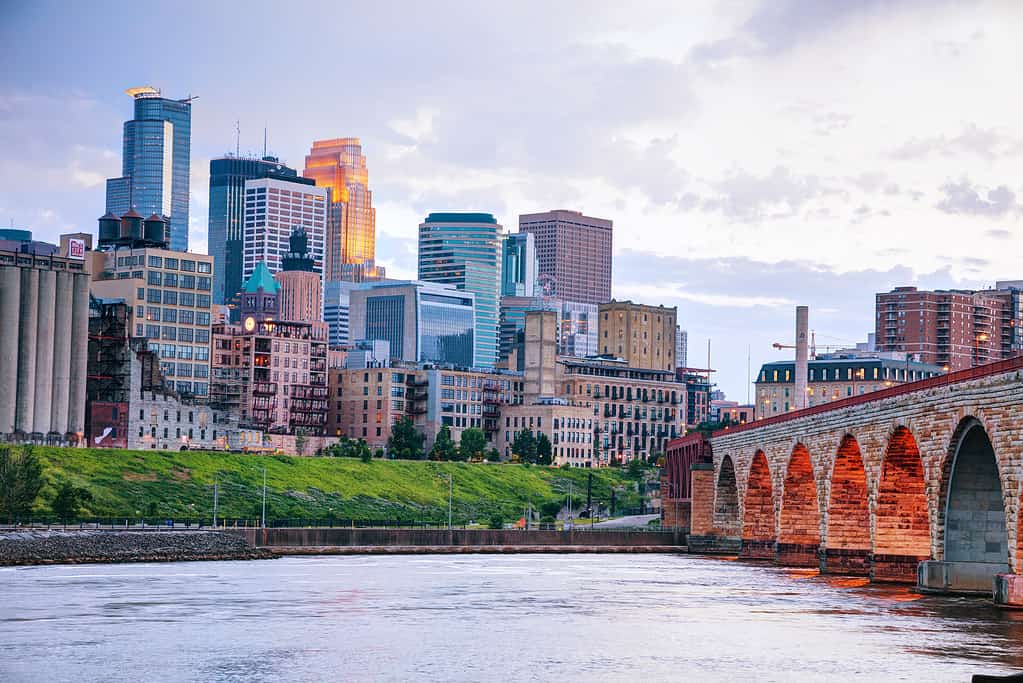
Downtown Minneapolis, Minnesota at night time as seen from the famous stone arch bridge
©AndreyKrav/iStock via Getty Images
The Twin Cities of Minneapolis and St. Paul are the largest cities in Minnesota by population. They are also characterized by their vibrant and diverse populations. While Minneapolis is the more populous of the two, St. Paul boasts a rich cultural mosaic due to its growth in minority communities and immigrant populations. Both cities are also experiencing an increase in younger demographics, reflecting their appeal among millennials and Gen Z residents.
Rochester
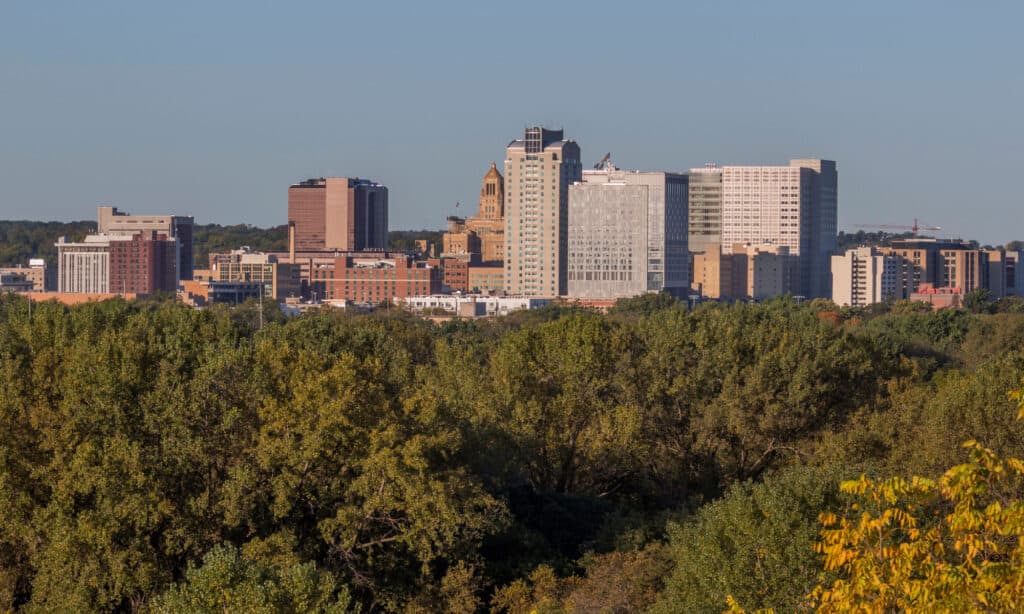
DoA Close Up Shot of the Rochester, Minnesota Skyline during an Early Fall Morning as seen from Quarry Hill Park
©iStock.com/SamWagnerTimelapse
Rochester is also home to the world-renowned Mayo Clinic. Thus, it maintains steady growth due to the healthcare institution’s presence. The city also attracts patients, medical professionals, and researchers, which contribute to its population growth.
Duluth
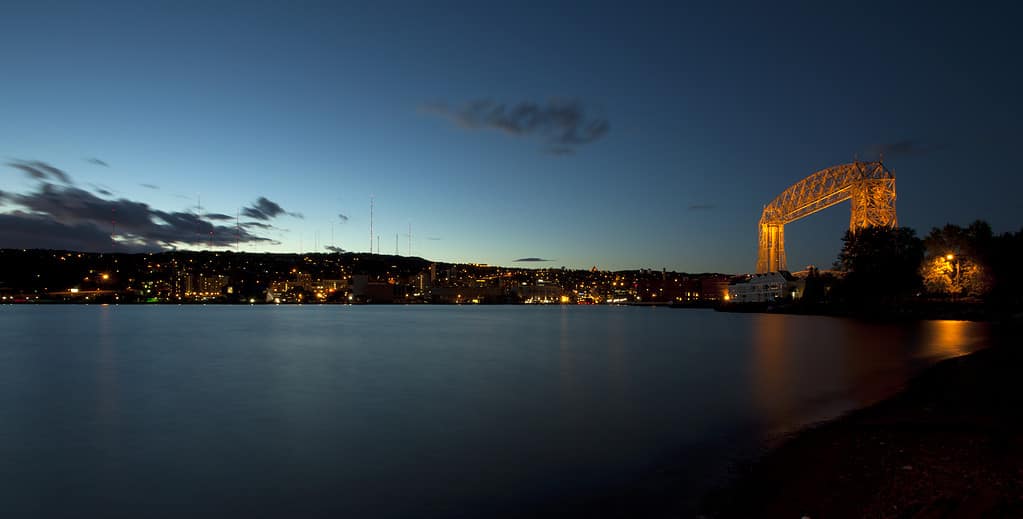
The Aerial Lift Bridge (left) is a major landmark in the port city of Duluth, Minnesota on the Great Lakes. taken just after sunset
©Aneese/iStock via Getty Images
Duluth, a city with an aging population, has been actively working to attract and retain younger talent. Efforts also include creating a thriving arts and culture scene, recreational opportunities, and nurturing tech startups.
Brooklyn Park
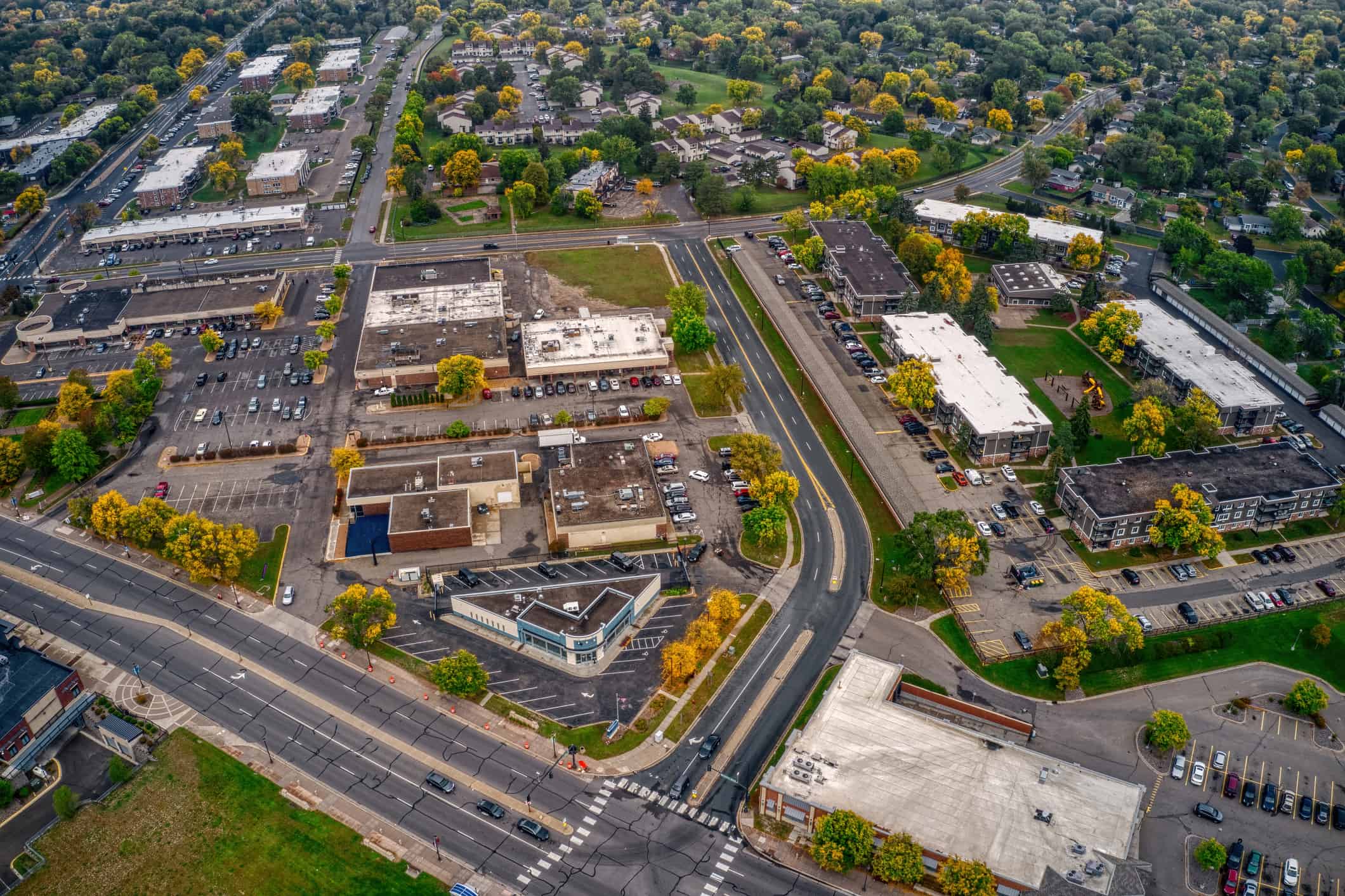
An aerial view of the Twin Cities Suburb of Brooklyn Park in Minnesota
©Wirestock/iStock via Getty Images
Brooklyn Park is famous for for its rapid population growth and increasing diversity. The city has also welcomed a surge of residents, including many immigrants, making it a culturally rich community.
St. Cloud

Quarry Park and Nature Preserve in St. Cloud, Minnesota.
©jpellgen/Flickr – License
St. Cloud has also experienced growth in its immigrant population, contributing to its cultural diversity. Efforts to foster inclusivity and integration have also made the city more welcoming to newcomers.
Eden Prairie

An aerial view of the shopping district of Eden Prairie, Minnesota
©Wirestock/iStock via Getty Images
Eden Prairie also focuses on fostering a robust business and tech community. Its diverse and educated population also contributes to its economic vibrancy.
Burnsville

Aerial View of the Twin Cities Suburb of Burnsville, Minnesota
©Jacob Boomsma/iStock via Getty Images
Burnsville’s growing population reflects the city’s diversity and the influence of various cultures. This diversity is also evident in the city’s dining options, festivals, and cultural events.
People at the Heart of the Cities
Thus, population is not just a statistic; it represents the people who call these cities home. The diversity, age dynamics, and cultural influences in Minnesota’s largest cities also shape their identities. It is important to recognize that the people who reside in these urban centers are at the heart of their growth and development.
Largest Cities by Total Area: Geography and Natural Attractions
The land area of a city often influences its geography, climate, and natural attractions. In this section, we will explore the top 15 largest cities in Minnesota by total land area, delving into their geographic features, climate, and any notable natural attractions.
| Rank | City | Total Land Area (sq. miles) | Geographic Features | Notable Natural Attractions |
|---|---|---|---|---|
| 1 | St. Louis Park | 10.9 | Suburban. | Cedar Lake, Wolfe Park, and biking trails. |
| 2 | Maple Grove | 35.0 | Suburban. | Elm Creek Park Reserve and Fish Lake. |
| 3 | Woodbury | 35.7 | Suburban. | Tamarack Nature Preserve and Colby Lake. |
| 4 | Blaine | 34.4 | Expanding suburbs with ample green spaces. | Bunker Hills Regional Park and Lakes. |
| 5 | Plymouth | 35.8 | Suburban. | Medicine Lake, Plymouth Creek Park. |
| 6 | Brooklyn Park | 26.6 | Expanding suburb with lakes and parks. | Palmer Lake Park and Shingle Creek Regional Trail. |
| 7 | Eagan | 32.9 | Suburban. | Lebanon Hills Regional Park and Caponi Art Park. |
| 8 | Eden Prairie | 32.5 | Suburban. | Purgatory Creek Park and Bryant Lake Regional Park. |
| 9 | Coon Rapids | 23.1 | Close to the Mississippi River. | Mississippi River Trail and Sand Creek Park. |
| 10 | Lakeville | 36.1 | Expanding suburbs with lakes and farmland. | Lake Marion and Ritter Farm Park. |
| 11 | Burnsville | 24.9 | Suburban. | Buck Hill Ski Area and Murphy-Hanrehan Park Reserve. |
| 12 | Minnetonka | 26.0 | Suburban. | Lake Minnetonka and Minnewashta Regional Park. |
| 13 | Apple Valley | 16.9 | Suburban. | Lebanon Hills Regional Park and Alimagnet Lake. |
| 14 | St. Cloud | 40.0 | Close to Mississippi River. | Beaver Islands and River’s Edge Park. |
| 15 | St. Paul | 52.0 | Capital city with numerous parks and the Mississippi River. | Como Park and Hidden Falls Regional Park. |
Notable Natural Attractions
St. Louis Park

Aerial View of the Business District of St. Louis Park in the Twin Cities, Minnesota Metro
©Jacob Boomsma/iStock via Getty Images
St. Louis Park, despite its suburban character, has urban oases like Cedar Lake and Wolfe Park. Thus, it provides green spaces for residents. The city’s park system and biking trails also contribute to its recreational appeal.
Maple Grove
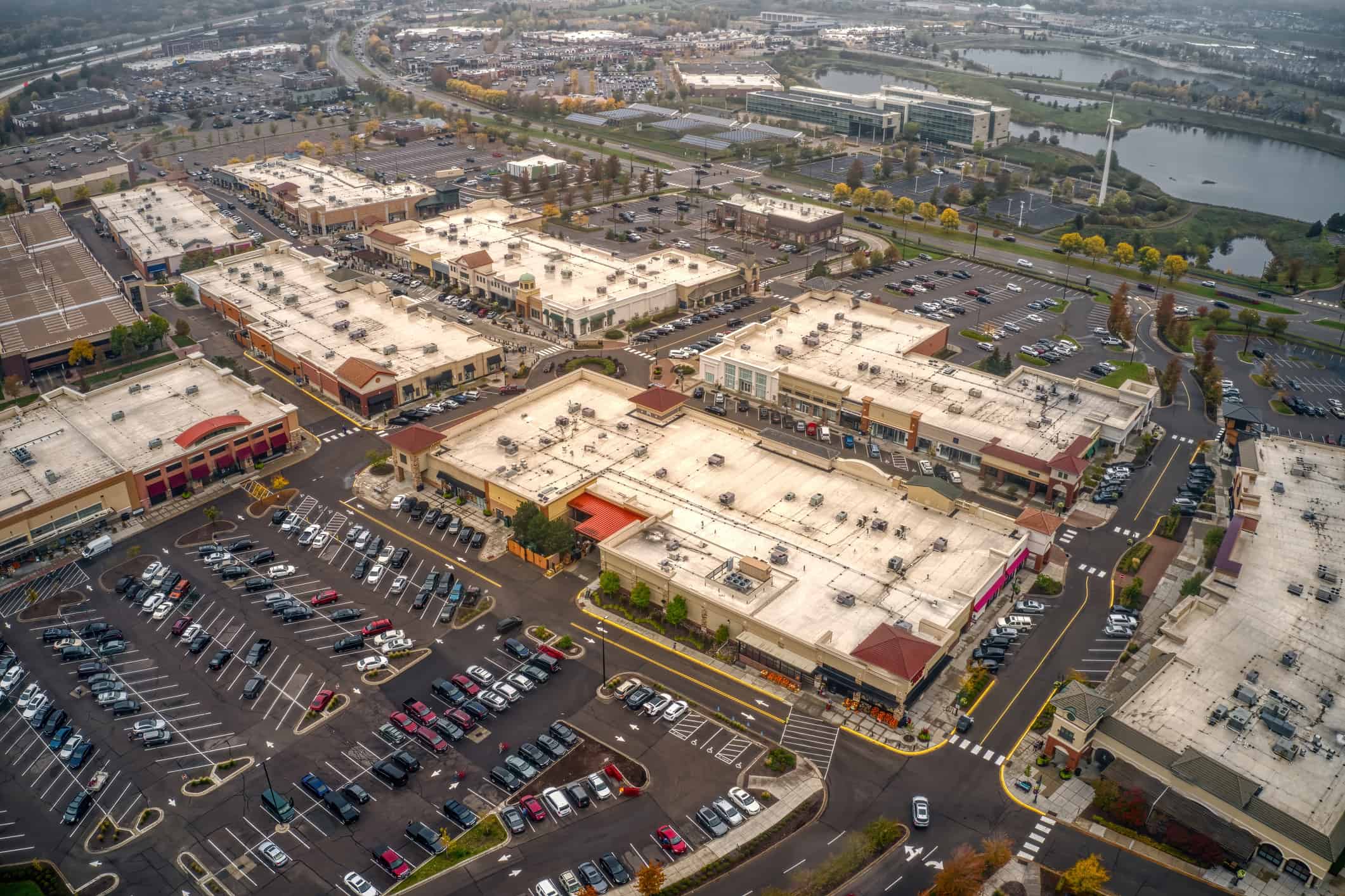
An aerial view of the Twin Cities Suburb of Maple Grove, Minnesota
©Wirestock/iStock via Getty Images
Maple Grove’s expansive land area has numerous lakes and green spaces, including Elm Creek Park Reserve and Fish Lake. The city is also known for its commitment to preserving natural areas.
Woodbury
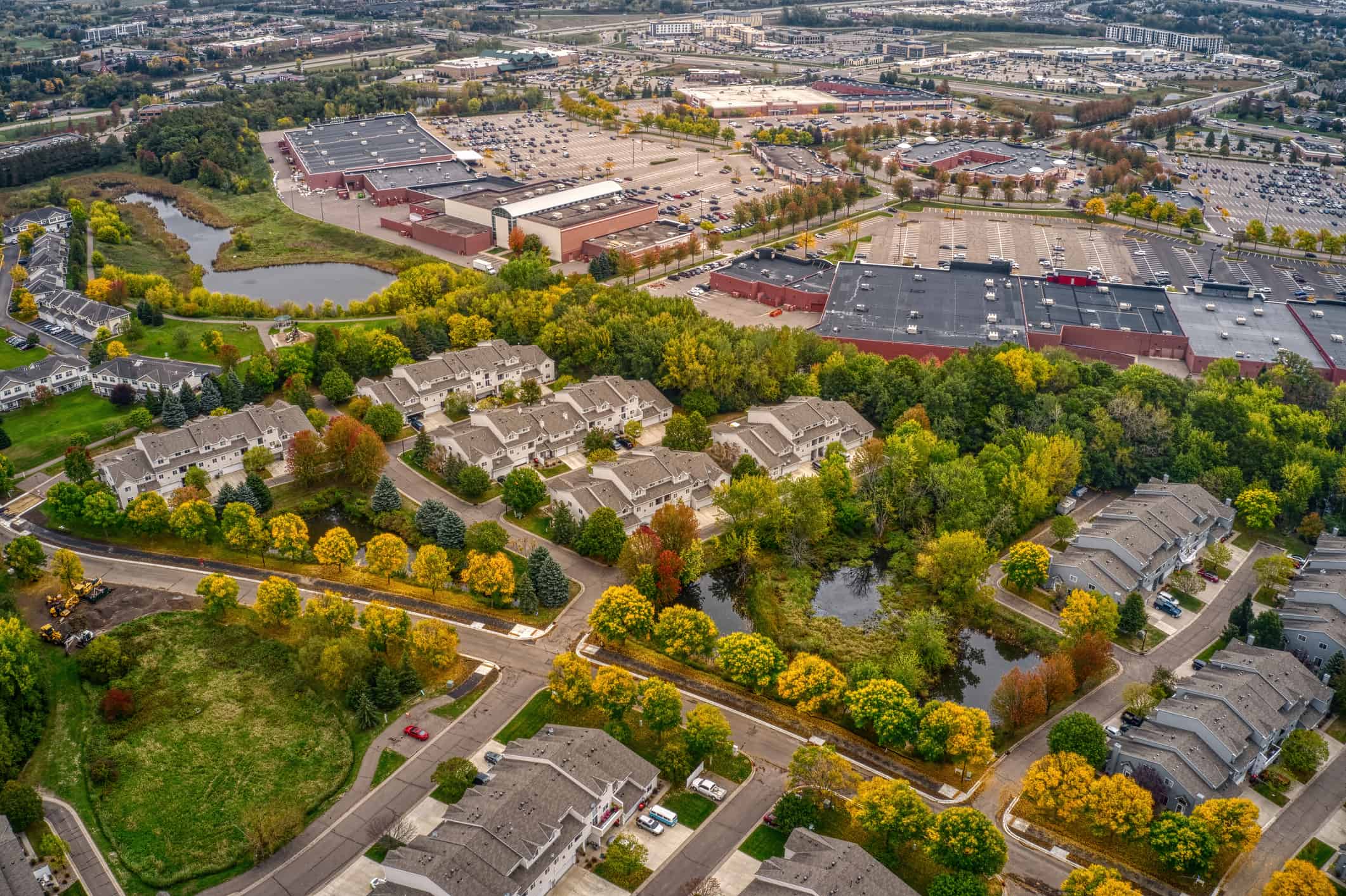
An aerial view of the Twin Cities suburb of Woodbury in Minnesota
©Wirestock/iStock via Getty Images
Woodbury has suburban living with access to natural beauty. Tamarack Nature Preserve and Colby Lake also provide opportunities for outdoor exploration.
Blaine
Blaine’s growing suburbs have ample green spaces, including Bunker Hills Regional Park and lakes. The city’s commitment to recreation and nature is also evident in its practices.
Plymouth
Plymouth’s suburban landscape includes Medicine Lake and Plymouth Creek Park. The presence of these also enhance the quality of life for residents. The city’s commitment to green spaces is also a notable feature.
Brooklyn Park
Brooklyn Park’s expanding suburbs offer residents access to Palmer Lake Park and the Shingle Creek Regional Trail. These also provide recreational opportunities in a natural setting.
Eagan
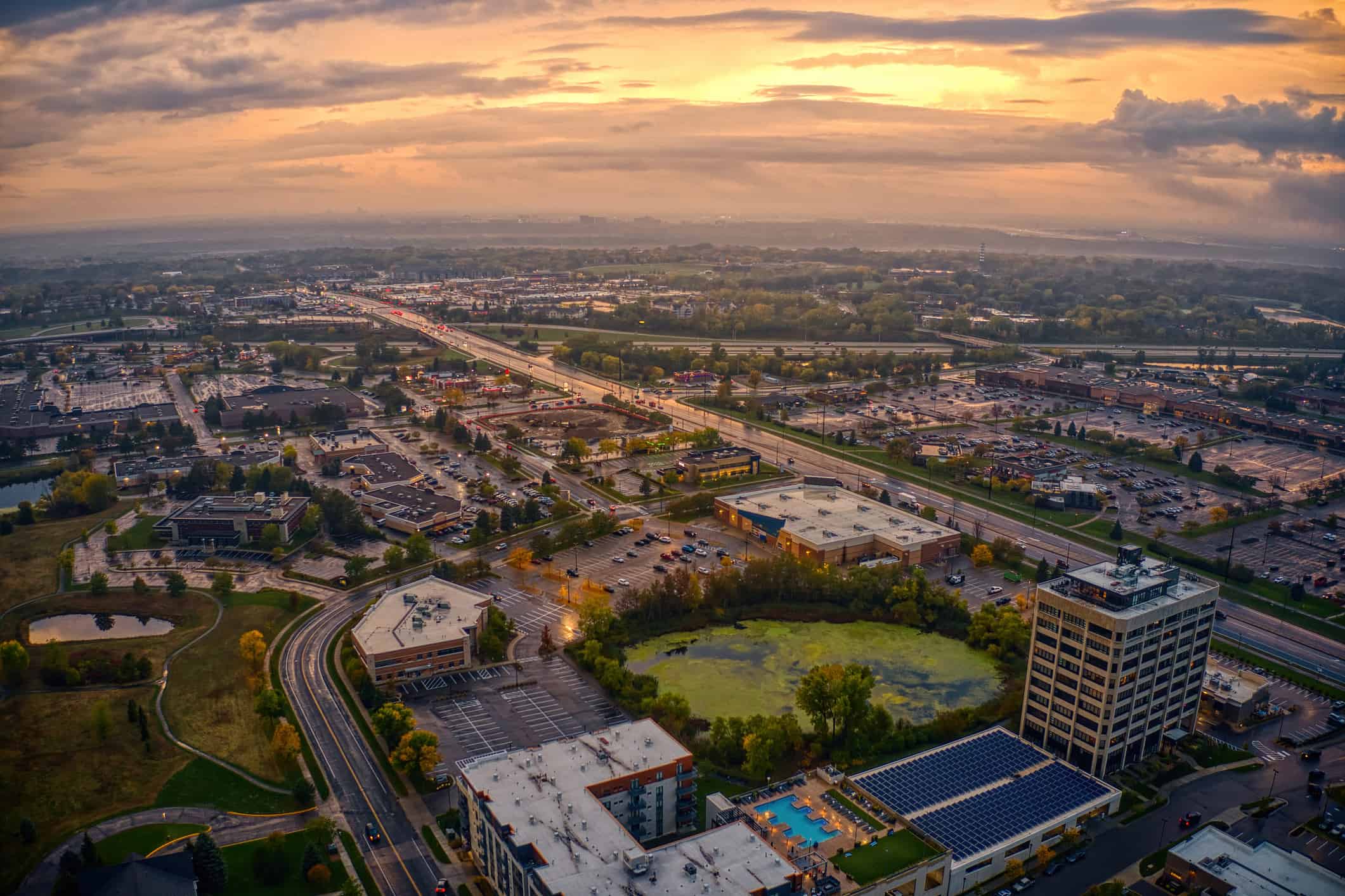
Aerial View of the Twin Cities Suburb of Eagan, Minnesota
©Jacob Boomsma/iStock via Getty Images
Eagan is a part of the Twin Cities metro area. It is also known for Lebanon Hills Regional Park and Caponi Art Park. These spaces offer a blend of natural beauty and cultural experiences.
Eden Prairie
Eden Prairie’s suburban charm is also enhanced by Purgatory Creek Park and Bryant Lake Regional Park. These spaces have lots of lakeside leisure and outdoor activities.
Coon Rapids
Coon Rapids, with its proximity to the Mississippi River, also offers opportunities for those who enjoy the outdoors along the Mississippi River Trail and at Sand Creek Park.
Lakeville
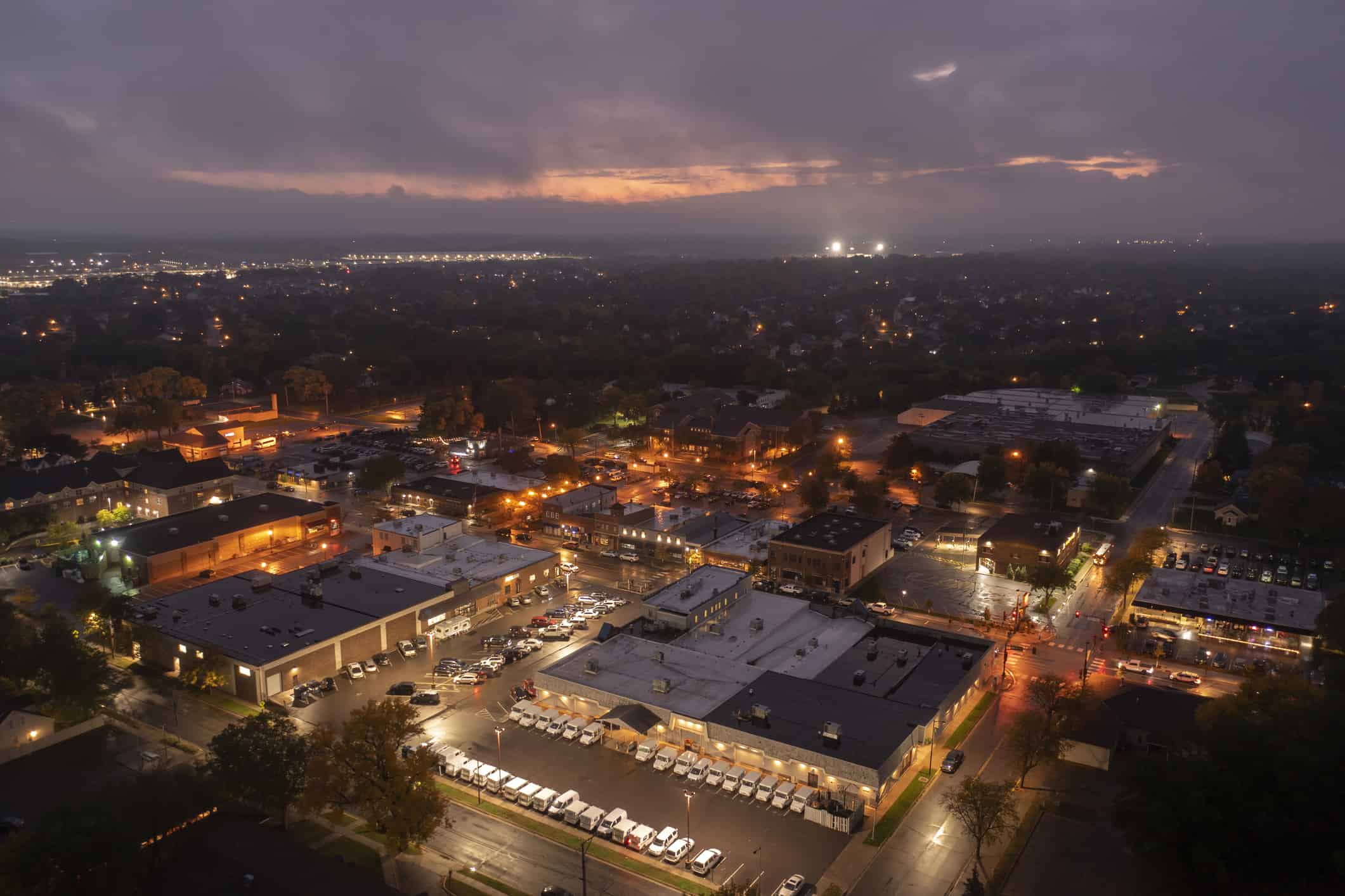
An aerial view of the Twin Cities Suburb of Lakeville with illuminated lights at night in Minnesota
©Wirestock/iStock via Getty Images
Lakeville’s expanding suburbs have spaces like Lake Marion and Ritter Farm Park. These spaces also provide natural escapes for residents amidst the city’s growth.
Burnsville
Burnsville’s neighborhood includes Buck Hill Ski Area and Murphy-Hanrehan Park Reserve. These spaces offer not only outdoor recreation but also have natural retreats.
Minnetonka

Beautiful view of a gazebo patio deck in the fall along Minnesota Lake Minnetonka in the Twin Cities. Sun burst in photo
©Melissa Kopka/iStock via Getty Images
Minnetonka is famous for Lake Minnetonka and Minnewashta Regional Park. Thus, this makes it a haven for water lovers as well as lovers of lakeside living.
Apple Valley
Apple Valley, with its parks and green spaces like Lebanon Hills Regional Park and Alimagnet Lake, has several natural escapes within a suburban environment.
St. Cloud
St. Cloud, located along the Mississippi River, has access to the Beaver Islands and River’s Edge Park, offering scenic riverfront experiences.
St. Paul
St. Paul, as Minnesota’s capital, also has numerous parks, including Como Park and Hidden Falls Regional Park, within its urban landscape. All of this also adds to the city’s charm.
Natural Beauty and Urban Life
Thus, the land area of Minnesota’s largest cities represents a diverse range of geographic features, from lakes and parks to riverfront access. These natural attractions not only enhance the quality of life for residents but also contribute to the unique character of each city.
Largest Cities by Economic Impact: Engines of Prosperity
Economic vitality is a crucial aspect of a city’s growth and development.
| Rank | City | Key Industries | Major Employers |
|---|---|---|---|
| 1 | Minneapolis | Finance, healthcare, technology, manufacturing. | UnitedHealth Group, Target, 3M, Wells Fargo. |
| 2 | St. Paul | Healthcare, education, government, manufacturing. | State of Minnesota, 3M, University of Minnesota. |
| 3 | Rochester | Healthcare, technology, hospitality. | Mayo Clinic, IBM, Charter Communications. |
| 4 | Bloomington | Hospitality, retail, healthcare, technology. | Mall of America, HealthPartners, Donaldson Company. |
| 5 | Plymouth | Manufacturing, healthcare, retail. | The Mosaic Company, Allina Health, Proto Labs. |
| 6 | Woodbury | Healthcare, education, retail. | Woodwinds Health Campus, Globe University. |
| 7 | Brooklyn Park | Manufacturing, healthcare, technology. | Boston Scientific, Medtronic, Caribou Coffee. |
| 8 | Maple Grove | Retail, manufacturing, healthcare. | Walmart, Boston Scientific, Upsher-Smith. |
| 9 | St. Cloud | Healthcare, manufacturing, education. | CentraCare Health, Electrolux, St. Cloud State Univ. |
| 10 | Eagan | Technology, healthcare, manufacturing. | Thomson Reuters, Blue Cross Blue Shield, UPS. |
| 11 | Eden Prairie | Technology, healthcare, manufacturing. | Optum, C.H. Robinson, Starkey Hearing Technologies. |
| 12 | Coon Rapids | Healthcare, manufacturing, education. | Mercy Hospital, Pentair, Anoka-Ramsey Community Coll. |
| 13 | Burnsville | Manufacturing, retail, technology. | UTC Aerospace Systems, Northern Tool + Equipment. |
| 14 | Minnetonka | Healthcare, technology, manufacturing. | UnitedHealth Group, Cargill, Honeywell. |
| 15 | Lakeville | Manufacturing, technology, agriculture. | Post Consumer Brands, Advanced Wireless Solutions. |
Notable Economic Trends
Minneapolis
Minneapolis, as the largest city in Minnesota, has a diverse economy with strengths in finance, healthcare, technology, and manufacturing. The city also continues to see growth in its tech sector and emphasizes economic diversification.
St. Paul
St. Paul’s economic focus also centers on healthcare, education, government, and manufacturing. Major employers include the State of Minnesota and the University of Minnesota, contributing to the city’s economic stability.
Rochester
Rochester’s economic strength is closely tied to the Mayo Clinic, also attracting healthcare-related businesses and technology companies. The city has also experienced strong growth due to the Mayo Clinic’s presence.
Bloomington
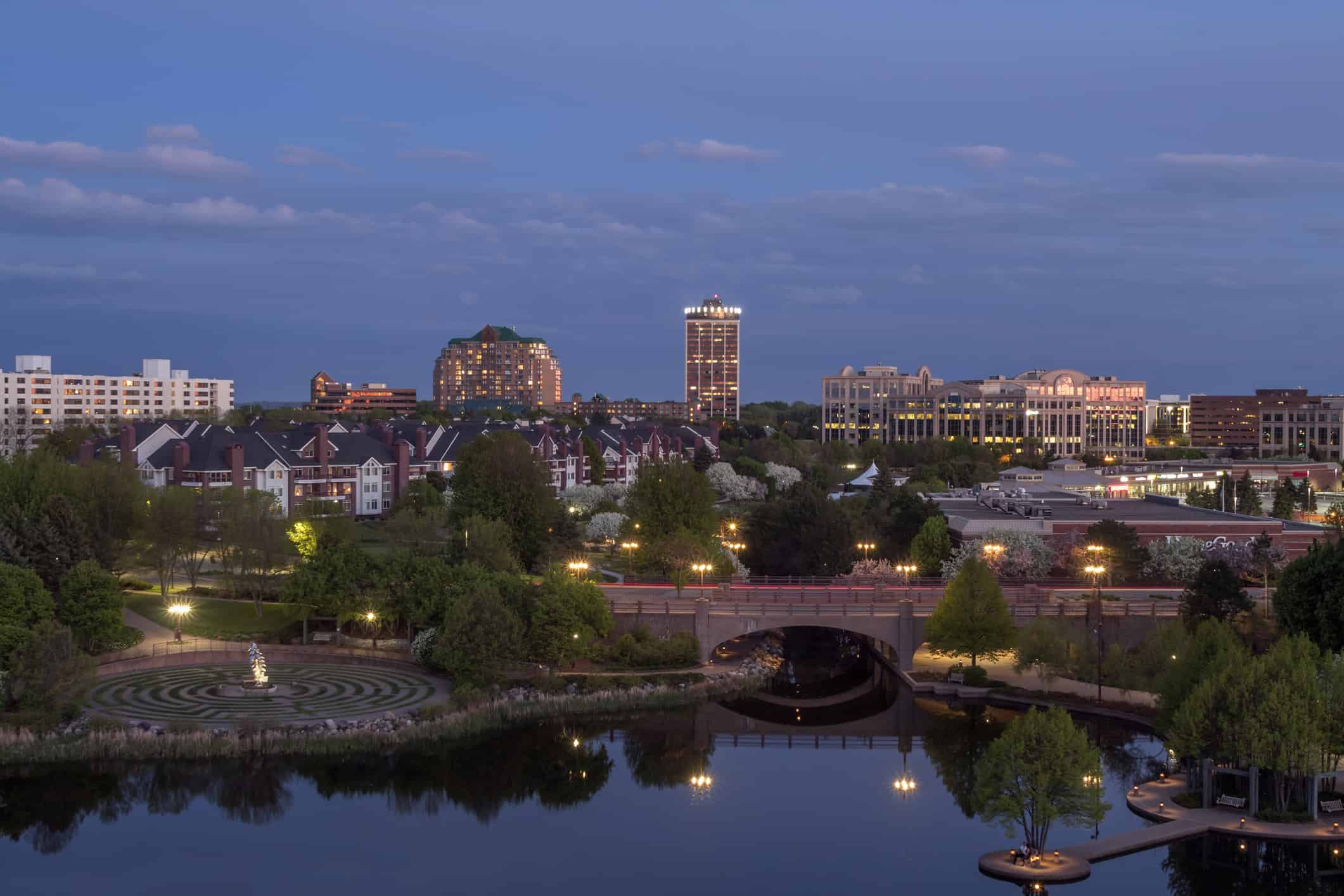
A Twilight Long Exposure Shot over the Beautiful Suburban Bloomington Skyline and Centennial Lakes Reflections
©SamWagnerTimelapse/iStock via Getty Images
Bloomington’s economy is also driven by the hospitality and retail sectors, anchored by the Mall of America. The city continues to invest in these industries to attract visitors.
Plymouth

An aerial shot of the Twin Cities suburb of Plymouth in Minnesota
©Wirestock/iStock via Getty Images
Plymouth has a thriving manufacturing sector, complemented by healthcare and retail. The Mosaic Company and Proto Labs are also key players in the city’s economic landscape.
Woodbury
Woodbury’s economy is strong because of the healthcare and education sectors. Woodwinds Health Campus and Globe University are significant contributors.
Brooklyn Park
Brooklyn Park is experiencing growth in its manufacturing and technology industries, due to major employers like Boston Scientific and Medtronic. The city is therefore emerging as a tech hub.
Maple Grove
Maple Grove’s economy is marked by its retail sector, led by Walmart, and a growing manufacturing industry.
Eagan
Eagan’s economy is characterized by the technology and healthcare sectors, with Thomson Reuters and Blue Cross Blue Shield being the most prominent employers.
Burnsville
Burnsville’s economic landscape has a strong manufacturing sector, with UTC Aerospace Systems as a key player.
Minnetonka
Minnetonka’s economic strength lies in healthcare and technology, driven by UnitedHealth Group and Cargill. The city’s focus on innovation supports these sectors.
Lakeville

A Medium Shot of a Walking Bridge in a Snowy Suburban Minnesota Landscape during a Winter Golden Hour
©SamWagnerTimelapse/iStock via Getty Images
Lakeville’s economy is marked by manufacturing and technology, with Post Consumer Brands and Advanced Wireless Solutions as key contributors.
Economic Engines of Prosperity
Economic output is a critical driver of growth and prosperity in Minnesota’s largest cities. These urban centers contribute significantly to the state’s economy by building and encouraging diverse industries, from healthcare and technology to manufacturing and retail.
Final Thoughts
Understanding the largest cities in Minnesota through different parameters provides valuable insights into the state’s identity.
We are reminded that each city is not just a statistic but a vibrant community with its own story to tell. These cities are the heartbeats of the North Star State.
The photo featured at the top of this post is © Aneese/iStock via Getty Images
Thank you for reading! Have some feedback for us? Contact the AZ Animals editorial team.







